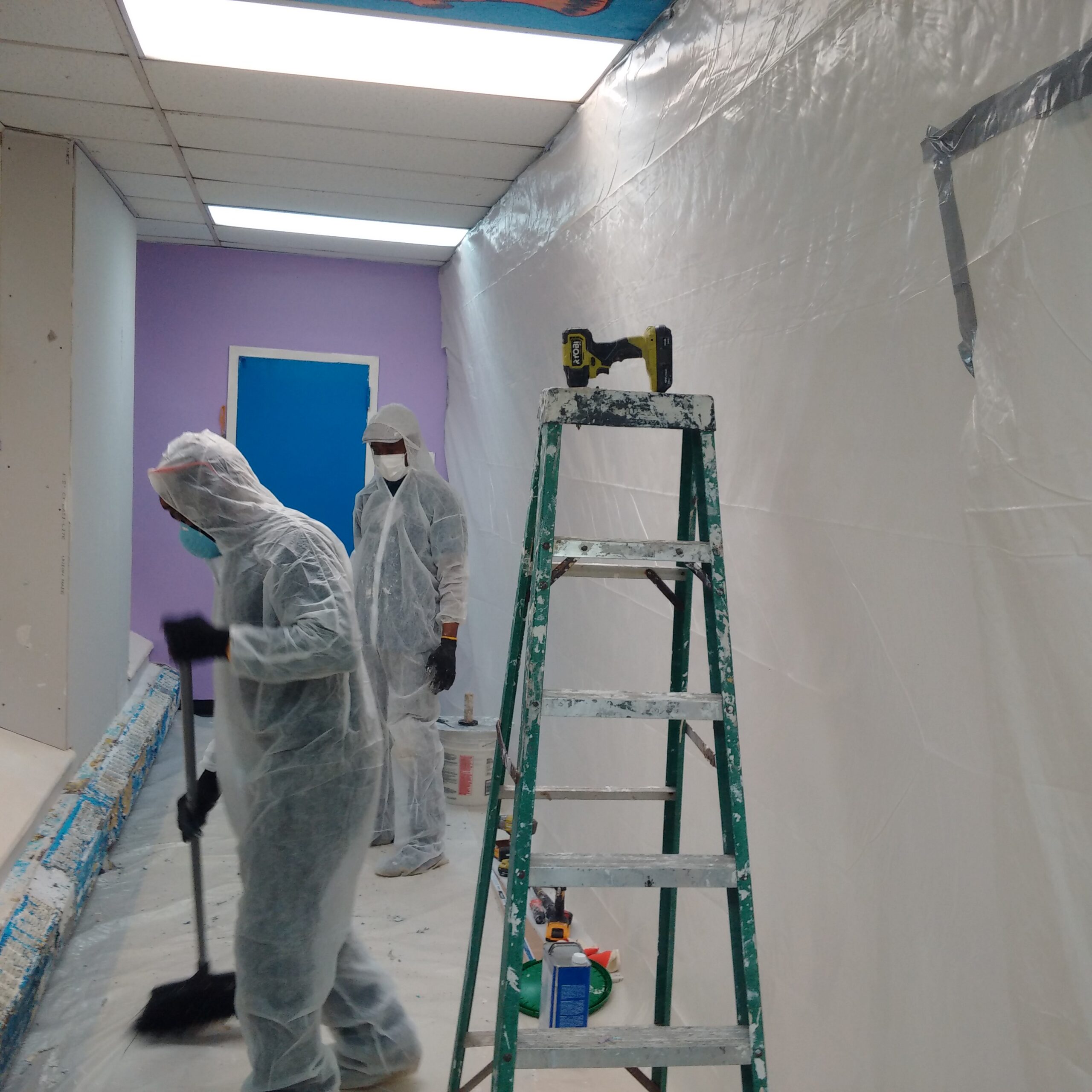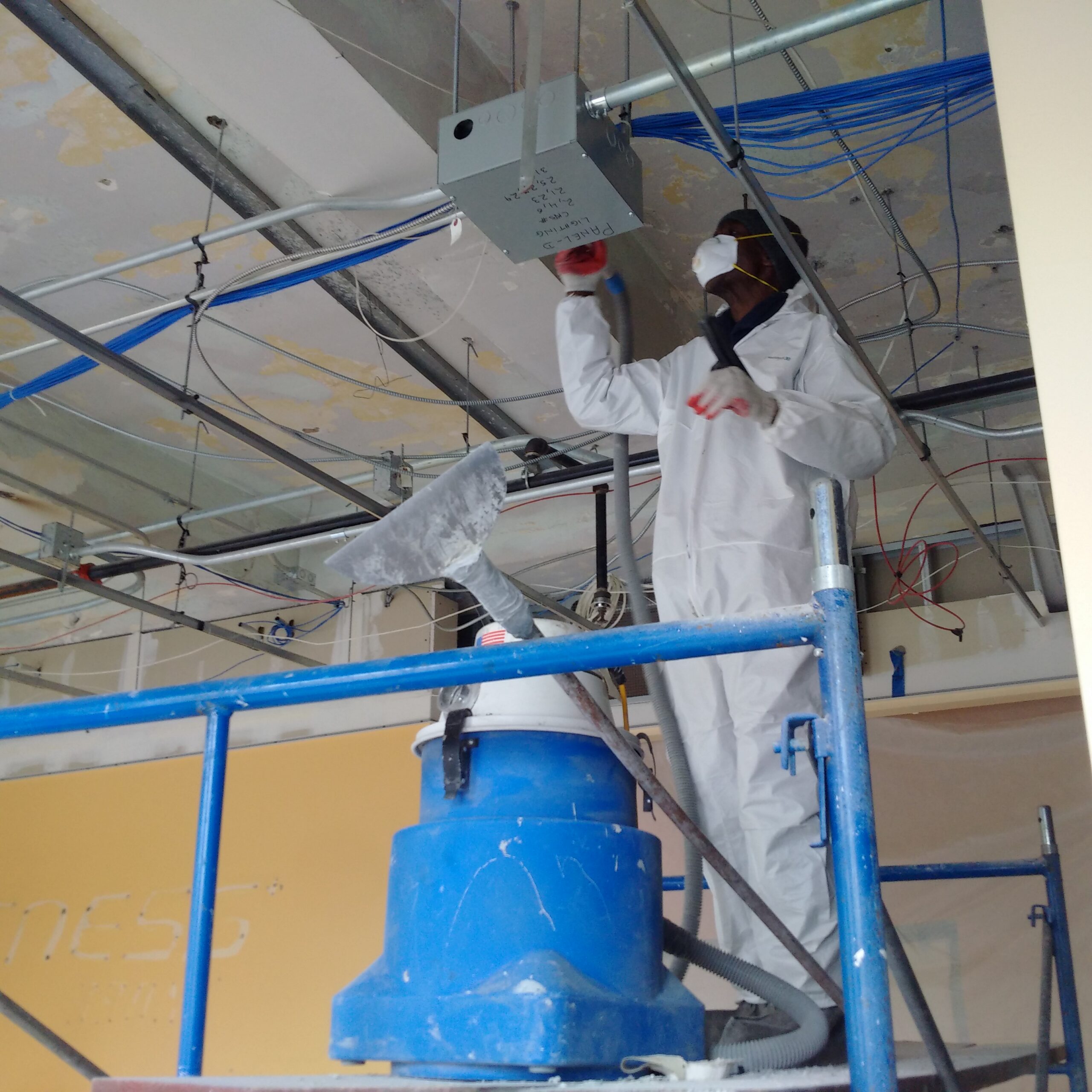Professional Lead Paint Removal Company-- Offering All NYC Boroughs
Professional Lead Paint Removal Company-- Offering All NYC Boroughs
Blog Article
Crucial Devices and Approaches for Reliable Lead Infraction Clean-up
Dealing with lead violations effectively necessitates a thorough strategy that mixes the right tools with tactical methodologies. The very first step includes gearing up workers with Individual Protective Equipment (PPE) to safeguard their wellness. Concurrently, making use of specialized cleaning devices, such as HEPA vacuums and lead-specific cleaner, is critical for detailed pollutant removal. Reliable control methods, consisting of plastic bed linen and unfavorable atmospheric pressure systems, are important to protect against the spread of harmful materials. Secure disposal methods and rigorous adherence to regulative standards guarantee liable handling of harmful waste. Yet what are the nuanced methods that truly make a difference?
Individual Protective Equipment
Personal safety tools (PPE) is an essential part in the reliable monitoring of lead contamination cleaning. The necessary PPE for lead clean-up includes respirators, protective clothing, handwear covers, and eye defense.
Respirators, specifically those furnished with HEPA filters, are vital for filtering system airborne lead particles, preventing breathing. Appropriate fit and seal checks are important to ensure their effectiveness. Safety garments, including coveralls and non reusable matches, stops lead dust from sticking to workers' garments, decreasing the threat of second contamination. Gloves, typically constructed from nitrile or latex, protect the skin from direct call with lead, while security goggles or full-face shields secure the eyes from dust and particles.
In addition, extensive training on the proper usage and upkeep of PPE is important. Employees should be enlightened on donning and doffing treatments to avoid contamination. Routine examinations and replacements of PPE parts are necessary to preserve their safety capabilities, making sure a safe and compliant cleanup operation.
Specialized Cleaning Tools

One more crucial tool is the wet/dry vacuum, which can properly clean up both dust and fluid impurities. These vacuums typically feature HEPA filters to provide an extra layer of safety and security. Wet wipes or tack fabrics are additionally crucial for surface cleansing; they are especially made to capture and hold lead particles, minimizing the threat of spreading out contamination.
For even more stubborn deposits, specialized lead-removal cleaner are required. These agents are developed to damage down lead bits, making them less complicated to get rid of. Scrub brushes with sturdy bristles can aid in this process, especially on rough surfaces where lead dust tends to adhere much more strongly.
Additionally, encapsulants are used to seal lead-contaminated surfaces, preventing the release of lead dust. These specialized paints and coatings are designed to abide by various substratums, giving a lasting remedy for lead control.
Reliable Containment Techniques
Efficient containment methods are crucial in mitigating the spread of lead contamination throughout cleaning activities. Executing robust control approaches makes certain that lead bits do not migrate to unaffected locations, consequently securing both workers and the environment. One key technique is using plastic sheeting to seal polluted zones. Sturdy polyethylene obstacles can be installed from flooring to ceiling to produce a regulated workspace, substantially decreasing the risk of air-borne lead dust dispersal.

To enhance control, encapsulants can be related to surface areas that are not being eliminated or disturbed. These specialized layers bind lead dust, lowering its accessibility for resuspension. Additionally, all workers must use appropriate Individual Protective Devices (PPE), consisting of respirators and disposable matches, to avoid contamination spread.
Safe Disposal Practices
Ensuring risk-free disposal techniques is a vital part in the administration of lead contamination cleaning. Proper disposal alleviates the risk of lead coming back the environment and threatening public wellness. The primary step is to recognize and segregate lead-contaminated waste from other products. Secure containment utilizing sturdy, leak-proof containers is necessary to protect against spillage during transportation.
Moving lead waste see it here requires adherence to strict guidelines. Utilizing accredited unsafe waste service providers ensures that the materials are handled responsibly. Paperwork, including materializes outlining the type and quantity of waste, should come with deliveries to track the waste from the website of beginning to its last disposal destination.
Designated contaminated materials disposal centers are equipped to take care of lead-contaminated products securely. These centers usually use innovative approaches such as stablizing, solidification, or chemical therapy to reduce the effects of the lead before disposal. Landfilling in specialized, lined areas that prevent leachate from contaminating groundwater is an usual technique for last disposal.
Routine training for personnel associated with lead garbage disposal is critical to keep security standards and prevent unintended direct exposure. By adhering to these practices, companies can dramatically minimize the environmental and health influences connected with lead contamination.
Regulatory Compliance Tips

Abiding by regulative compliance is extremely important in the successful implementation of lead contamination clean-up. Understanding and adhering to federal, state, and neighborhood guidelines ensures not just the safety and wellness of individuals yet also the lawful and financial wellness of the cleanup organization. The Epa (EPA) establishes strict criteria, such as the Lead Remodelling, Fixing, and Painting (RRP) Regulation, which mandates proper accreditation and training for contractors managing lead-based tasks.
Conformity starts with a comprehensive evaluation of relevant regulations and regulations. Organizations should stay upgraded on any kind of legal adjustments, which can be facilitated through routine training sessions and signing up for market updates. Documents is an additional critical compliance aspect; maintaining comprehensive check this site out records of all activities, including evaluation reports, worker training logs, and disposal materializes, is necessary.
Additionally, involving with accredited lead examiners or run the risk of assessors makes sure that lead dangers are properly determined and alleviated. Employers should impose the use of Personal Safety Tools (PPE) and make sure that security methods are purely adhered to. Finally, transparent communication with stakeholders, consisting of staff members, customers, and regulative bodies, will promote a society of conformity and responsibility, ultimately adding to a safer and more reliable lead cleanup process.
Verdict
Effective lead violation cleaning necessitates the assimilation of specialized devices and strategic techniques to make sure safety and efficiency. Utilizing HEPA vacuum cleaners, specialized cleaning up representatives, and efficient control techniques such as plastic bed linen and unfavorable air stress systems is necessary. Personal safety equipment (PPE) safeguards employees from exposure, while risk-free disposal techniques and stringent adherence to governing compliance are crucial for responsibly taking care of hazardous waste. Jointly, these measures substantially minimize health and wellness threats and contribute to a cleaner atmosphere.
Report this page